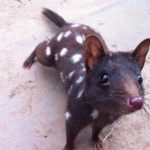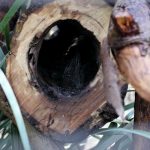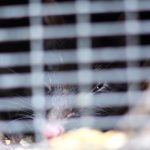This is an eastern quoll being all curious and nose, posted from @MtRothwell which is the Twitter account of the Mt Rothwell Conservation and Research Centre in Victoria, Australia.
NB: If this has been reblogged, it’s highly likely that even more names have been added since. Here’s a permalink to the original post.
Here’s a few other folks working with Australian wildlife or associated disciplines who have Twitter accounts. Follow them for news from the field and awesome quoll pictures.
- jude (@fudgeh0g) – currently engaged in zoological field work around the Pilbara, quite possibly the last habitat of the endangered northern quoll that hasn’t been invaded by poisonous cane toads
- Jack Ashby (@JackDAshby) – a self-professed “Australian mammal nerd”
- Trent Forge (@TrentForge) – a Ph.D student studying spotted-tailed quolls
- Melissa Jensen (@MelissaJensen_) – a Ph.D candidate working out of Adelaide involved with western quoll reintroduction to the Flinders Ranges
- Stephanie Hing (@Conserv8nVet) – a Ph.D candidate and vet and conservation scientist working out of Perth’s Murdoch University on woylies
- Tim Doherty (@TimDoherty_) – another wildlife researcher, much of his work has centred on studying feral cats
- A S Glen (@AS_Glen) – an NZ-based ecologist studying invasive species
- Conservation Ecology Centre (@ConservationEC) – a Victorian organisation focussing on the Cape Otway ecosystem
- Mulligans Flat (@MulligansFlat) – a wildlife sanctuary in the ACT
- Nature Conservation Trust (@NCT_NSW) – a NSW-based trust committed to private land conservation
This is a list in progress and I intend to add more Aussie wildlife researchers and organisations working with quolls and other Australian marsupial predators as I find them. So stay tuned!


